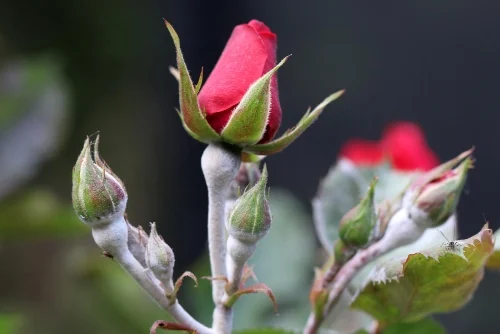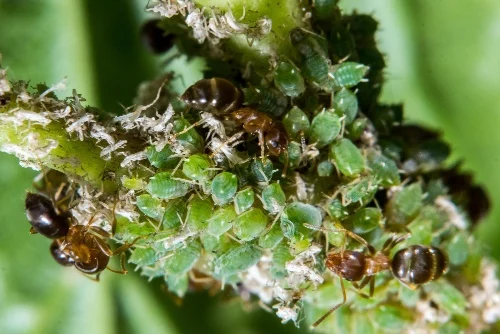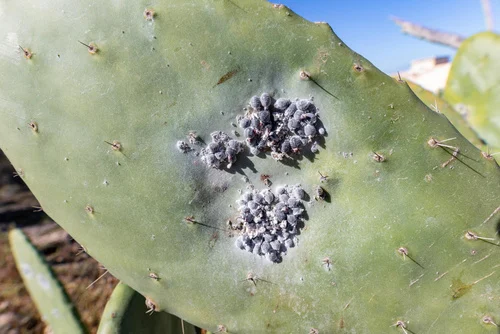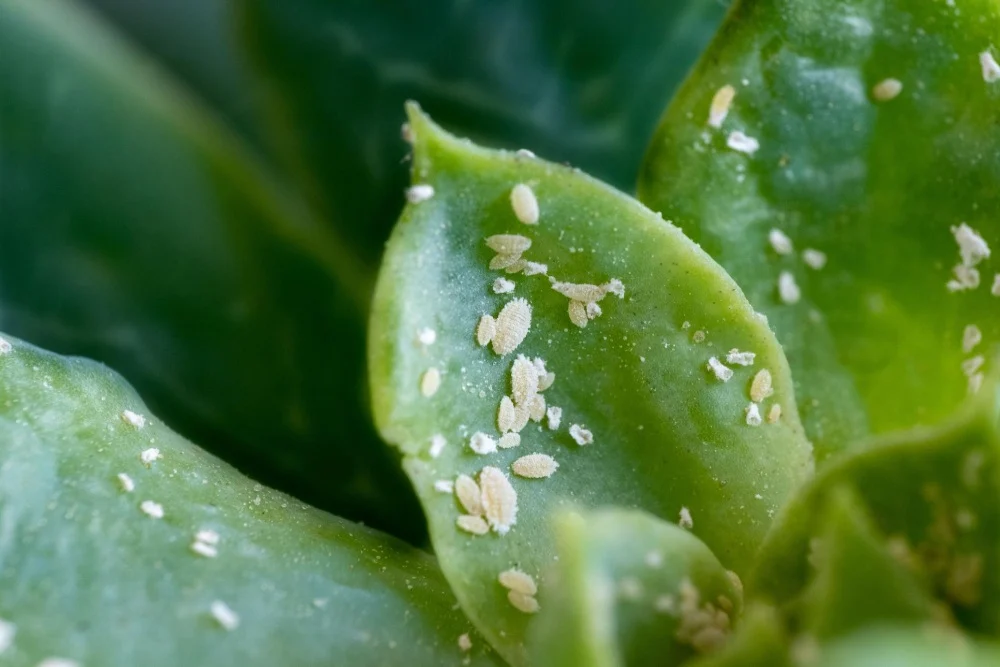As gardeners, we value indoor plants most as they are our gateway in the winter, harsh weather, or off-season to connect with the greens. The benefits of indoor plants do not end with this only. These plants purify the air, complement the interior, and uplift the occupants’ spirits.
Unfortunately, your houseplants are also not free from the vulnerabilities of pests and diseases. Among all the associated plant health issues, the infection caused by mealybugs is critical. If you never tackled this problem, this article is for you.
I elaborate on mealybugs treatment for indoor plants from my practical experience here. So, let’s know the treatment process in detail, ensuring the houseplants’ healthy conditions.
Understanding Houseplant Health-issues due to Mealybugs
In this section, I describe the mealybug identification process and life cycle while informing you of the most common indoor plants that are highly susceptible to this pest. I also listed the signs of mealybug infestations.
Brief Overview of Mealybugs
Mealybugs are tiny insects with an oval shape. You can easily identify this bug by seeing the cottony wax white color. It belongs to the family Pseudococcidae, and the average size is 1-4 millimeters.
However, you must understand its life cycle to effectively deal with the infestation. Its life cycle is divided into three segments, and the following points will inform you of those in a comprehensive manner.

- Laying Eggs: In general, the female mealybug lays the egg in the summer and sometimes in the late summer. They keep the ovisec containing 300-400 eggs attached with foliage and stems in a partially hidden manner.
- Naymph: The hatching takes place after 5-10 days of laying the eggs, considering the suitability of temperature and humidity. However, even after hatching, the young bugs can reside inside the shell, waiting for the right environment.
- Mature Mealybugs: The newborns start to eat the plants and go through several molts before reaching maturity. Studies show that mature female Mealybugs are highly capable of laying eggs in greater quantities.
Can you see the risk? First, from early life, the bugs start to destroy your houseplants. Second, the higher reproduction capability of the female counterpart adds vulnerabilities, as the more bugs there are, the more destruction will occur.
Indoor Plants that are Highly Susceptible to Mealybugs
The table below informs you of the indoor plants that are resistant to this bug.
| Tropical plants | Other plants |
| Orchids | Cacti |
| African violates | Ferns |
| Begonias | Hoya |
| Coleus | Jade plants |
| Amaryllis | Palms |
| Ficus |
Factors that Attract Mealybugs
The following factors are the most prominent reasons for the attraction of mealybugs.
- The weak and stressed houseplants attract the mealybugs in a greater way.
- Plants in higher temperatures and humidity attract this bug heavily, as the mealybugs thrive in high temperatures and humid environments.
- If you arrange the indoor plants in a crowdy manner, such an arrangement welcomes mealybugs.
Signs of Mealybug Infestation
By observing the following signs, you become sure that your houseplants are suffering from the mealybugs infestation.

- If you see white masses on the leaves, steam joints, main body folds, etc., your indoor plants accommodate the mealybugs.
- This pest category leaves honey-like substances on the plant parts. This sticky fluid is the food of the ants. So, if you see ants on your indoor plants’ bodies frequently and there are shooty molds, it is for sure that the plant(s) is infected.
- As the mealybugs eat the leaves, foliage, etc., the plant’s growth becomes slow down. It is also a core sign of mealybugs infestation. Again, along with the stunted growth, if the plant also showcases deformed growth, it is another sign of a mealybug attack.
- Mealybugs suck the fresh leaves making those yellow and wilting which signifies the infestation of mealybugs.
Stepwise Guide to Make the Houseplants Free from Mealybugs
If you observe any of the above signs, immediately apply the following step-by-step guide to get rid of mealybugs.
Step 01: Taking Preparation
Separate the infected plant from others. It will restrict the spreading of the bugs. Now, arrange the following materials.
- Insecticidal soap
- Rubber alcohol
- Spray bottle
- Cotton swab
- Plastic bag
- Appropriate PPE like gloves, goggles, face masks, etc.
Step 02: Pre-chemical Treatment Step
In this step, you remove the bugs that are visible to the naked eye. Dip the cotton swab into the rubber alcohol and wet the header perfectly. Check the stem joints, leaf axils, etc., to identify mealybugs’ presence.
Once found, rub the alcohol-wet swab to remove the bugs. If you see any leaf or any particular extended portion of the indoor plant is too damaged or the volume of the bug is very large, just extract that plant part.
Step 03: Chemical Mealybugs Treatment
The application of chemical treatment is a foolproof approach to getting rid of mealybug infestations. Fill the spray with the insecticidal soap. Then, spray on the affected parts of the plant.
If you notice any part is not yet affected, but there are one or two mealybugs, spray that part also. I strongly recommend you incorporate the manufacturer’s labeling on the insecticidal soap’s packaging or bottle.
Step 04: Applying Natural Remedies
After the manual and chemical cleaning approaches are made, you have to apply natural remedies. I prefer neem oil as a natural remedy.
Purchase the neem oil from the market and fill up the spray. Then, apply the neem oil to the whole plant. However, in the above steps (from 2 to 4), you must wear goggles, gloves, and a face mask.
Step 05: Repetition of the Treatments
You must not stop the treatment process just after one time. These bugs are tiny and can go unnoticed. So, you have to repeat the treatment process.
In this case, apply steps 2 to 4 once every three days for two weeks. The repetition of the treatment work will ensure that your indoor plants are totally free from mealybugs.
Tips to Prevent Mealybug Infestation
It is a universal truth that prevention is better than cure. I also agree with this statement and prefer taking preventive measures so that the plants do not get affected by mealybugs. You can apply the following personalized tips to keep your indoor plants from mealybugs infestation.

- As you purchase the indoor plant from the shop, immediately examine the whole plant body to identify signs of any bugs’ presence. If you find any, return the plant.
- Once you purchase new houseplants, keep those separate for one or two weeks to check whether the plants have mealybugs.
- If you are going for indoor plants that are naturally susceptible to mealybugs, I strongly recommend you develop the companionship of plants with garlic, marigolds, etc.
- Monitor the houseplants on a regular basis. I suggest you examine the plants once every two weeks.
- Never overcrowd the houseplants.
Final Words
I am sure that you will not face any problems incorporating mealybug treatment for indoor plants now. By implementing the stepwise guide, you will be able to make the plants free from these bugs.
Moreover, the application of the preventive tips is highly recommended. Finally, I suggest you try to avoid growing indoor plants that are susceptible to mealybugs infestation.


